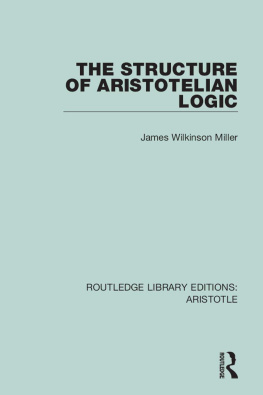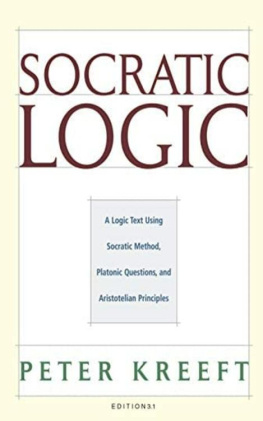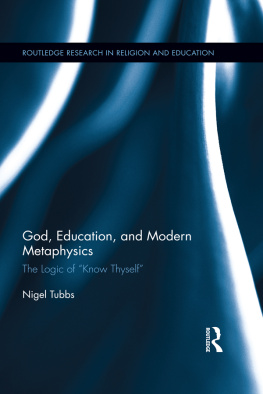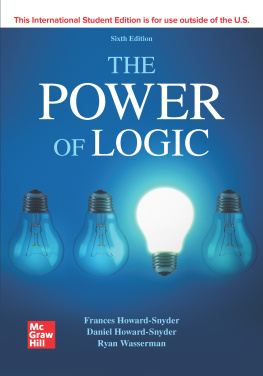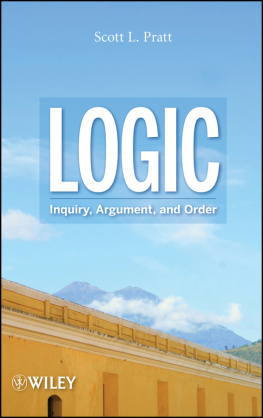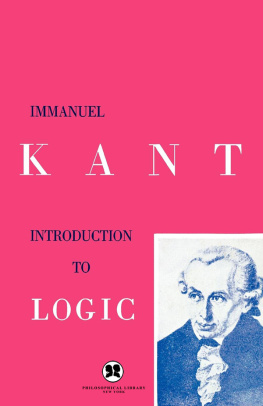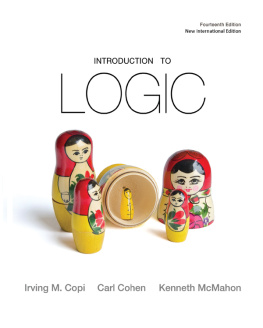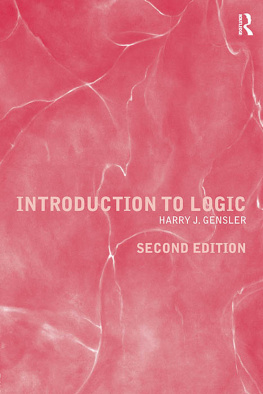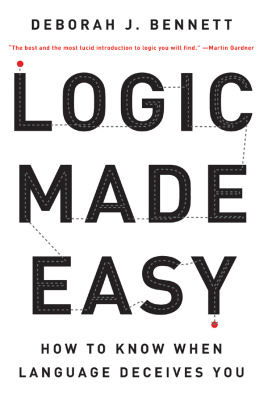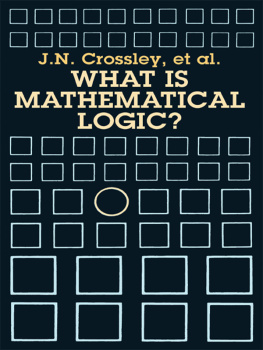
ROUTLEDGE LIBRARY EDITIONS: ARISTOTLE
Volume 7
THE STRUCTURE OF ARISTOTELIAN LOGIC
THE STRUCTURE OF ARISTOTELIAN LOGIC
JAMES WILKINSON MILLER

First published in 1938
This edition first published in 2016
by Routledge
2 Park Square, Milton Park, Abingdon, Oxon OX14 4RN
and by Routledge
711 Third Avenue, New York, NY 10017
Routledge is an imprint of the Taylor & Francis Group, an informa business
1938 James Wilkinson Miller
All rights reserved. No part of this book may be reprinted or reproduced or utilised in any form or by any electronic, mechanical, or other means, now known or hereafter invented, including photocopying and recording, or in any information storage or retrieval system, without permission in writing from the publishers.
Trademark notice: Product or corporate names may be trademarks or registered trademarks, and are used only for identification and explanation without intent to infringe.
British Library Cataloguing in Publication Data
A catalogue record for this book is available from the British Library
ISBN: 978-1-138-92762-9 (Set)
ISBN: 978-1-315-67490-2 (Set) (ebk)
ISBN: 978-1-138-94232-5 (Volume 7) (hbk)
ISBN: 978-1-315-67319-6 (Volume 7) (ebk)
Publishers Note
The publisher has gone to great lengths to ensure the quality of this reprint but points out that some imperfections in the original copies may be apparent.
Disclaimer
The publisher has made every effort to trace copyright holders and would welcome correspondence from those they have been unable to trace.
THE STRUCTURE OF ARISTOTELIAN LOGIC
BY
JAMES WILKINSON MILLER, Ph.D.
Professor of Philosophy in the College of William and Mary in Virginia

Printed in Great Britain by
R. I. SEVERS, CAMBRIDGE
CONTENTS
PREFACE
This book is a short treatise rather than a textbook and is addressed to advanced students of logic.
I am of course indebted to the very important writings of Professor Edgar A. Singer, Jr., and Professor Henry Bradford Smith. No serious student of Aristotelian logic can fail to be influenced by Professor Singers Syllabus of Logic (published in Professor Smiths Letters on Logic, ) nor by Professor Smiths Primer of Logic, Non-Aristotelian Logic, Letters on Logic, Foundations of Formal Logic, First Book in Logic, System of Formal Logic, Symbolic Logic, and other writings.
I have endeavoured to acknowledge in the text all points of indebtedness to these authors, but as their influence on the present work is pervasive the detailed acknowledgments are perhaps not complete.
Aside from differences of method and detail, the present work differs from the writings of Professor Singer and Professor Smith as follows: maintaining that the principal issues in Aristotelian logic as it now exists are concerned with the problem of negative terms, it aims to be a complete treatment of Aristotelian logic as containing negative terms.
To my friends Professor C. I. Lewis of Harvard University, Mrs. Susanne K. Langer of Radcliffe College, Professor Kurt E. Rosinger of Womans College of the University of North Carolina, Professor H. S. Leonard of Duke University, Professor Paul Henle of the University of Michigan, and Professor Charles T. Harrison of the College of William and Mary in Virginia, all of whom read the work in its original form and made valuable criticisms, I am under deep obligations. They are of course not responsible for the views expressed in this book nor for any errors which it may contain.
Finally, I wish to express my gratitude to Harvard University for a grant from the Milton Fund for secretarial assistance and to the Department of Philosophy of Harvard University for a subsidy which made publication possible.
July, 1938
INTRODUCTION
In the second place, it treats subalternation as a valid form of inference. That is, it assigns (tacitly at least) conventional meanings, different from those employed in modern (i.e. symbolic or mathematical) logic, to the four categorical forms, meanings such that subalternation holds.
These two characteristics, however, are not sufficient to define Aristotelian logic. For an indefinite number of systems could be devised which possess these two properties. Since further distinguishing traits of Aristotelian logic will appear only in the course of our investigation, a definition of Aristotelian logic framed in terms of its essential properties cannot be given at the outset.
Nevertheless some preliminary definition of the subject which we intend to study is desirable. One might think that for this purpose a reference to the origin of Aristotelian logic would suffice, and that the most reasonable preliminary definition of Aristotelian logic would be the system of logic set forth in the logical works of Aristotle. However, Aristotelian logic has developed since the time of its founder. Our subject matter, since our interests in this book are not historical, is traditional logic as it exists at present. (In view of the leisureliness of progress in traditional logic, the present will mean roughly the last hundred years.)
Our preliminary definition may seem to be more inclusive than it actually is. We propose to study the deductive logic common to the textbooks. But not everything which appears in the textbooks is really logic. The categories, the predicables, classification and division, the rules of definition, the enthymeme, material fallacies, etc., these, following what I take to be the concensus of authoritative opinion, I regard as bits of metaphysics, epistemology, psychology, rhetoric, and grammar, and not parts of logic at all. They therefore do not fall under my definition and shall not be treated in this book.
Further, I exclude from consideration the hypothetical and disjunctive forms of proposition and hypothetical and disjunctive arguments, not indeed on the ground that they are foreign to logic, but because the traditional treatment of them is very fragmentary and is not distinctive, and because an adequate account of them would take us far beyond the intended scope of traditional logic and would coincide with the modern calculus of propositional functions.
What remains, then, is immediate inference (including both eduction and the square of opposition), the syllogism, and the sorites; in short, the traditional categorical forms of proposition and the traditional forms of argument the premises and conclusion of which are all categorical.
Traditional logic, in the present stage of its development, differs from its earlier forms in one major respect. Traditional logic as it now exists is a system which contains negative terms (as in obversion, contraposition, etc.), whereas, prior to the nineteenth century, negative terms had not been admitted.
The inclusion of negative terms in traditional logic ought to have resulted in a great logical simplification of the system. Instead it led to nothing but confusion and contradiction. For unfortunately the standard expositors of traditional logic, namely, the authors of the manuals of logic, failed to be aware that the addition of negative terms necessitated drastic changes in the system.
The aim of the present book is to effect the reorganizations which are required by the presence of negative terms in the system, and, at the same time, to give a rigorous presentation of traditional logic as containing negative terms.
Next page
